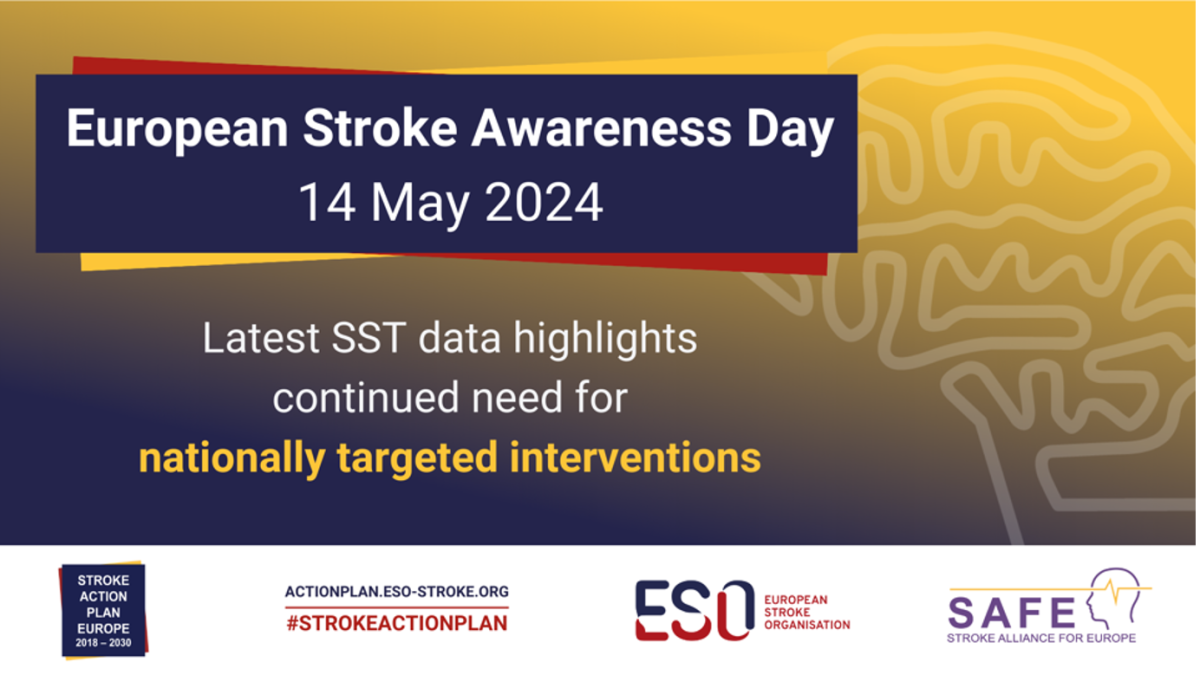
Brussels, 14 May 2024
Europe takes small steps forward to improve stroke care and support, but too many inequities persist, Stroke Action Plan for Europe’s latest Stroke Service Tracker data reveal.
Today’s launch of the latest data from the Stroke Action Plan for Europe (SAP-E) Stroke Services Tracker (SST) paint a comprehensive picture of stroke care and support across Europe, highlighting both progress and persistent challenges, and the continued need for nationally targeted interventions.
The data, collected from 43 countries, show some encouraging developments in meeting the overarching SAP-E targets for stroke care and support. Acute treatments, as well as the organisation and quality control of services, have shown notable improvements, reflecting the dedication of healthcare professionals and policymakers to improve outcomes and impact of stroke.
Republic of Moldovia, but also to Bulgaria, Czech Republic, Estonia, Norway, Portugal, Romania, Sweden, and Wales have done particularly well in their progress to reach the overarching targets.
However, despite these advancements, access to stroke unit care, follow-up and life after stroke services and support remain areas of concern. The data reveal a lack of improvement in ensuring equitable access to vital stroke care services, raising questions about the consistency and accessibility of care for all patients.
Furthermore, the SST data highlight significant variation and inequity in stroke care and support provision across different regions, emphasising the urgent need for targeted interventions to address disparities and ensure equitable access to quality care for all individuals affected by stroke.
Europe sees 1.1 million strokes yearly, causing an estimated 460,000 deaths every year. Nearly 10 million people are living with the long-term impacts of stroke accounting for the greatest nervous systems disability-adjusted life years (DALYs). The economic toll is substantial, with stroke care costs totalling €60 billion in 2017 across EU countries, a figure projected to rise to €86 billion by 2040 if investment in stroke prevention and care remains insufficient. Yet, research shows that over 80% of strokes could be prevented.
The SAP-E was designed in 2018 to reduce this burden of stroke through improvements of the entire chain of care and support. The SST was set up to provide a European overview of performance against SAP-E’s 12 key areas of improvement in stroke care and support.
As we move forward, it is imperative that national stakeholders in all European countries prioritise their efforts to use the SST data to address the identified gaps and disparities in their stroke care. We must now see countries implementing targeted strategies and interventions for stroke across Europe to ensure that anyone affected by stroke will receive timely, equitable, and high-quality stroke care and long-term support, regardless of their geographic location or socioeconomic status.
For more information on the SAPE Stroke Service Tracker and its findings, please click here to visit the website
“The latest findings from the Stroke Action Plan for Europe Stroke Service Tracker demonstrate encouraging progress in certain aspects of stroke care. However, the persistent challenges, particularly in access to stroke unit care and follow-up services, underscore the pressing need for concerted efforts to address disparities and ensure equitable access to care for all individuals affected by stroke.”
Professor Hanne Christensen, SAP-E Chair
“As advocates for stroke survivors, it’s disheartening to see the continued lack of improvement in access to stroke unit care, follow-up and life after stroke services. Addressing these disparities is essential to ensure that all those affected by stroke receive the comprehensive care they need to recover and thrive.”
Arlene Wilkie, Director General, Stroke Alliance for Europe
“The Stroke Action Plan for Europe gives all European countries benchmarks to target themselves against, and while the latest data from the services stroke tracker are encouraging that we are moving in the right direction, we still have a long way to go to address the inequities in care.”
Professor Peter Kelly, President, European Stroke Organisation




